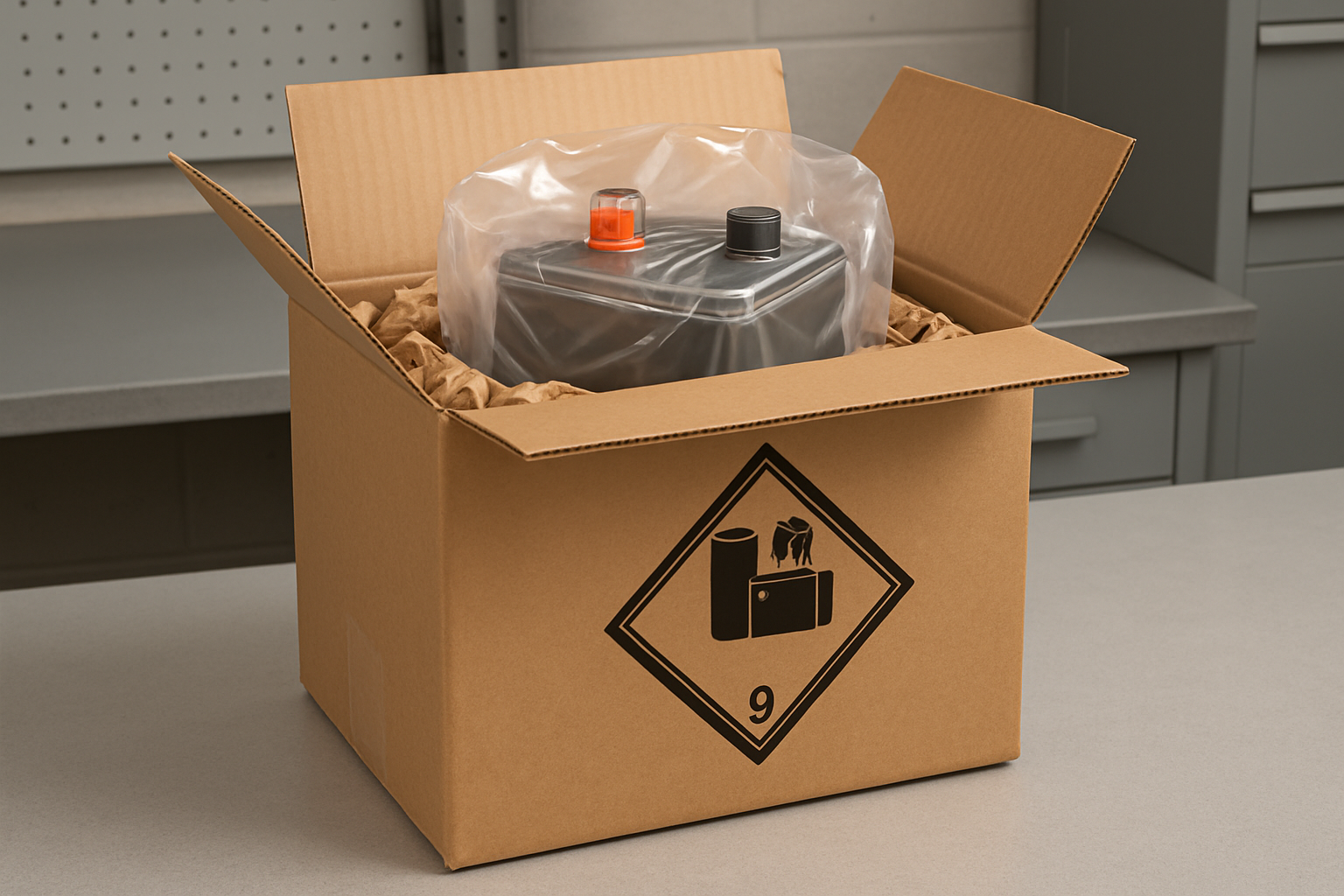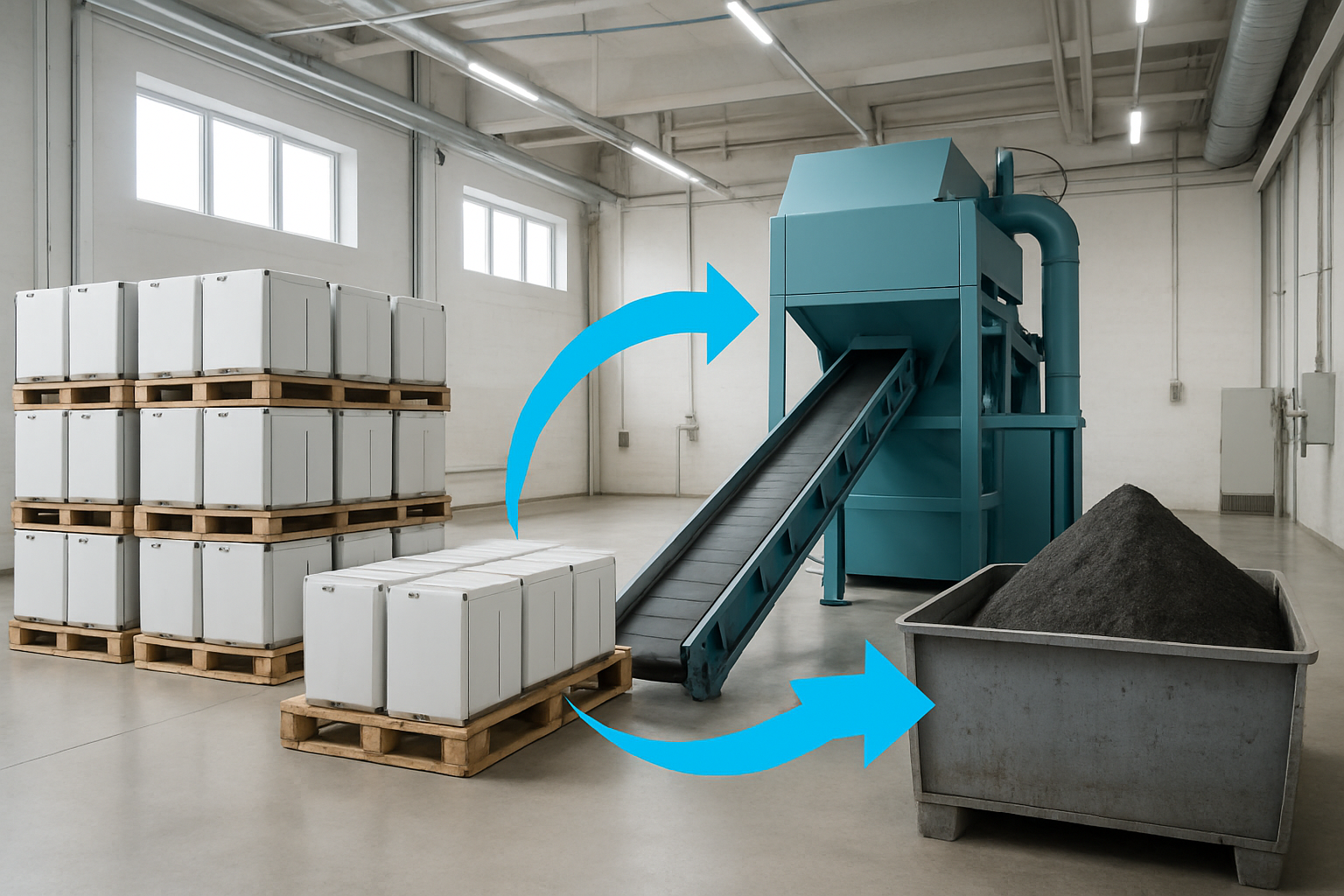As home energy storage systems (ESS) become more common, a critical question arises: what is the correct procedure for handling the batteries once they reach the end of their operational life? Proper battery recycling is not just a matter of responsible waste management; it is a crucial step for safety, environmental protection, and resource conservation. An effective ESS battery recycling plan ensures that hazardous materials are managed correctly and valuable components are recovered, supporting a sustainable energy future. Attempting to handle this process without a clear plan can pose serious risks.
Step 1: Identify Your Battery and Its End-of-Life Status
Before you can begin the recycling process, you must understand the equipment you have. This initial step is fundamental to a safe and effective disposal plan.
Understanding Your Battery Chemistry
Home ESS units use various lithium-ion chemistries, with Lithium Iron Phosphate (LiFePO4) being a popular choice due to its stability and long lifespan. Other types may include Nickel Manganese Cobalt (NMC) or Nickel Cobalt Aluminum (NCA). The battery's chemistry is usually listed on the unit's label or in the technical manual. Knowing this helps the recycling facility process it correctly. Different chemistries require different recycling methods to safely recover materials.
Recognizing Signs of a Failing Battery
A battery doesn't just stop working overnight. Its performance degrades over time. Key indicators that your battery is approaching its end-of-life include:
- Reduced Capacity: The battery no longer holds a charge for as long as it used to.
- Frequent Errors: The system's monitoring software reports frequent faults or warnings.
- Overheating: The battery becomes unusually warm during normal operation.
- Physical Changes: Any swelling, leaking, or visible damage to the battery casing is a critical warning sign. If you notice these, contact a professional immediately.
Step 2: Find a Certified Recycling Partner
Disposing of a home ESS battery is not a do-it-yourself task. These are high-voltage systems that contain hazardous materials. Finding the right professional partner is essential for safe battery disposal.
Contacting the Original Manufacturer or Installer
Your first point of contact should be the company that manufactured or installed your system. Many have established take-back programs and end-of-life plans. They are most familiar with the equipment and have streamlined processes for decommissioning and recycling. They can arrange for a qualified technician to handle the entire process.
Using Certified E-Waste Recycling Networks
If the original manufacturer is not an option, seek out a certified e-waste or battery recycling company. Organizations like Call2Recycle in the United States offer resources and collection points. Ensure any third-party recycler you choose is certified to handle industrial lithium-ion batteries and complies with all environmental and transportation regulations.
What to Look for in a Recycler
When selecting a recycling partner, verify their credentials. Look for certifications from recognized bodies and confirm they adhere to regulations set by agencies like the Environmental Protection Agency (EPA) and the Department of Transportation (DOT). A reputable recycler will provide clear documentation and follow strict safety protocols.

Step 3: Prepare the Battery for Safe Removal and Transport
Proper preparation is critical to prevent accidents during the removal and transportation phases. This stage must be managed by a trained professional.
The Importance of Professional Decommissioning
Decommissioning an ESS involves more than just unplugging it. A qualified technician will power down the entire solar and storage system in the correct sequence, discharge the battery to a safe voltage level, and disconnect it from your home's electrical system. This process mitigates the risk of electric shock and fire. Damaged or defective batteries require even more stringent handling procedures.
Safety Protocols During Removal
Technicians should use appropriate Personal Protective Equipment (PPE), including insulated gloves and safety glasses. They will inspect the battery for any signs of damage before moving it. The area should be clear and well-ventilated.
Packaging Requirements for Transport
Once disconnected, the battery must be packaged according to strict transportation regulations. The U.S. Department of Transportation has specific guidelines for shipping large lithium-ion batteries, which are classified as hazardous materials. This typically involves placing the battery in a UN-approved container, protecting the terminals to prevent short circuits, and correctly labeling the package.
Step 4: Documentation and Compliance
Proper paperwork ensures the recycling process is transparent and compliant with legal requirements. This protects you and confirms the battery was handled responsibly.
Obtaining a Certificate of Recycling
Once the battery is processed, the recycling facility should issue a Certificate of Recycling. This document serves as official proof that your battery was disposed of in an environmentally sound and legally compliant manner. It's an important record to keep for your own files.
Understanding Local and National Regulations
Battery disposal is governed by regulations like the Resource Conservation and Recovery Act (RCRA) in the United States. While you are hiring a professional to manage the process, having a basic awareness of these rules helps you ensure your chosen partner is compliant. These regulations are in place to prevent environmental contamination and ensure public safety.
The Bigger Picture: Why Your Action Matters
Following a safe ESS battery recycling plan does more than just dispose of old equipment. It connects your individual actions to a much larger effort to create a sustainable energy ecosystem.
Contributing to a Circular Economy
Recycling recovers valuable materials like lithium, cobalt, and nickel from spent batteries. These materials can then be used to manufacture new batteries, reducing the need for new mining. According to a report from the International Energy Agency (IEA), the market value of recycled battery metals has grown significantly, highlighting the economic importance of these resources. By recycling, you help close the loop and build a more resilient supply chain.
Reducing Environmental Impact
The environmental benefits of battery recycling are substantial. As noted in an The State of Energy Innovation report, using recycled metals can reduce the greenhouse gas emissions associated with battery production by up to 80% compared to using virgin materials. This directly contributes to lowering the carbon footprint of the entire energy storage industry and supports global climate goals. With battery demand for energy storage and electric vehicles set to grow, recycling is a key strategy for sustainable expansion.
Frequently Asked Questions
Can I remove an old ESS battery myself?
No. You should never attempt to remove a home ESS battery yourself. These are high-voltage systems that pose a significant risk of electrocution, fire, and chemical exposure. Always hire a certified technician who is trained in decommissioning these specific systems.
What happens to my battery after it's collected?
After collection, the battery is transported to a specialized facility. There, it is disassembled, and its components are sorted. The valuable metals are recovered through processes that turn the core components into a substance known as 'black mass,' which is then refined to extract pure elements for new manufacturing.
Are there costs associated with recycling my home battery?
Costs can vary. Some manufacturers include the cost of recycling in the initial purchase price or as part of a take-back program. In other cases, you may need to pay a fee to the recycling company for decommissioning and transport services. It is best to clarify this with your installer or recycling partner beforehand.
How long do home ESS batteries typically last before needing recycling?
The lifespan of a home ESS battery depends on its chemistry, usage patterns, and operating environment. Generally, high-quality LiFePO4 batteries are designed to last for 10 to 15 years or more, often backed by a warranty for a certain number of cycles or years of performance.
Disclaimer: This article is for informational purposes only and does not constitute professional, legal, or financial advice. Always consult with a qualified professional for guidance on your specific situation.





Leave a comment
All comments are moderated before being published.
This site is protected by hCaptcha and the hCaptcha Privacy Policy and Terms of Service apply.